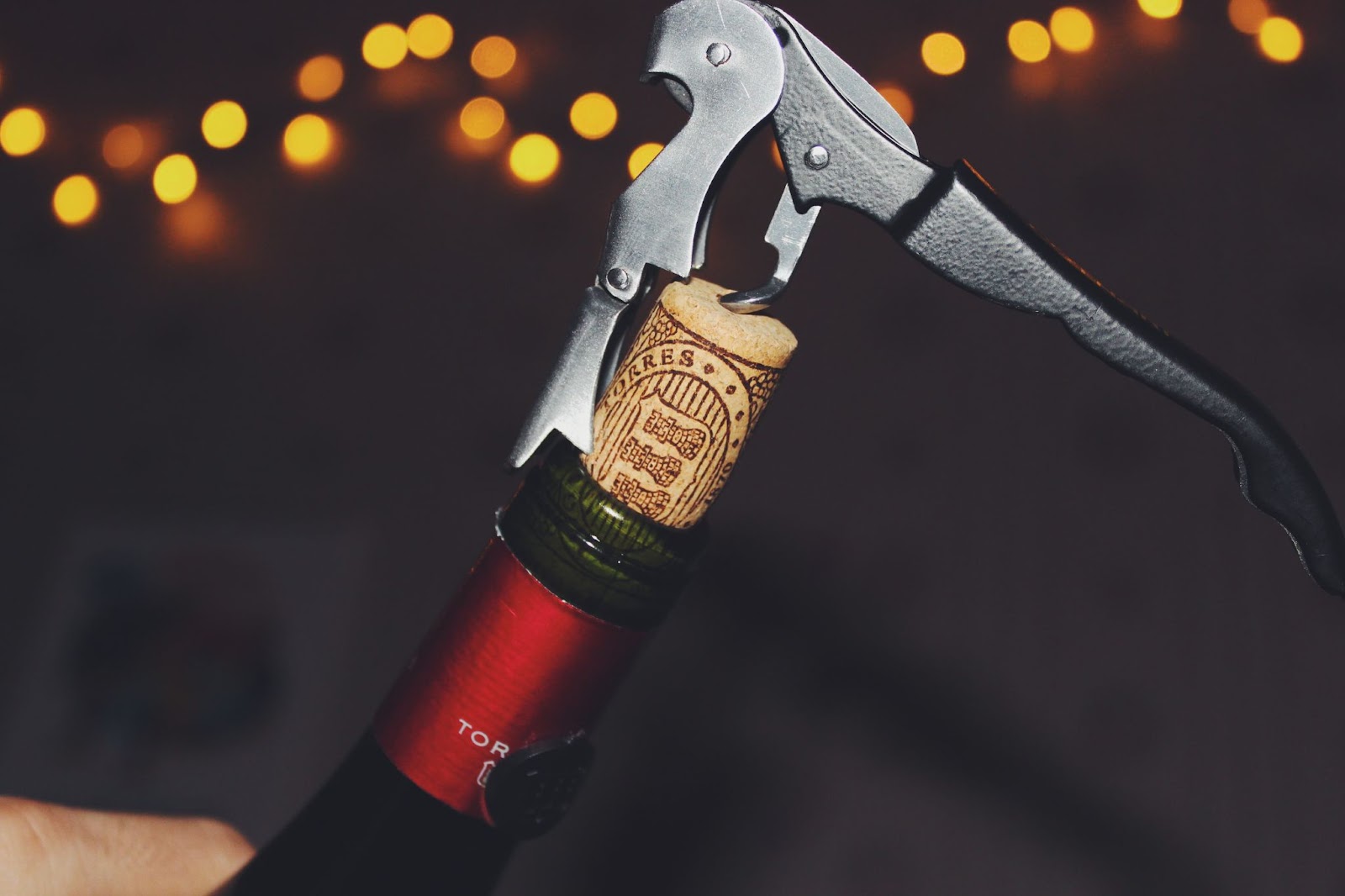
There are a number of reasons why your patrons might enjoy bringing their own bottle of wine to your restaurant. Not only is it affordable, but it also enhances their experience.
As a business owner without a liquor license (or even one that has a license but still offers “bring your own bottle”), letting your customers bring their own wine or bottles encourages more traffic through the door. Plus, offering BYOB helps your restaurant’s profit margin so you can focus more on the quality of cuisine and dining experience.
But before popping the cork, make sure you understand how to determine a corkage fee and the proper corkage etiquette. With that in mind, we’ve compiled a complete corkage fee guide to help you get started.
What We’ll Cover in This Piece:
What Is a Corkage Fee?

Typically, dining establishments that allow customers to bring in their own bottle of alcohol charge what’s called a “corkage fee.” In the simplest of terms, a corkage fee is an expense customers pay for consuming their own alcoholic beverages.
How Much Is a Typical Corkage Fee?
Owners at a variety of different types of restaurants will charge corkage fees, from fine dining establishments to casual neighborhood BYOB joints.
Subsequently, a corkage fee can vary widely. But an average corkage fee typically ranges between $10 to $40 per bottle (or even closer to $100 and above if you’re dining at a pricier place).
A good rule of thumb for determining a corkage fee for your restaurant is to make it at least the same cost as your most affordable bottle.
If you consider your restaurant more of a fine dining experience, consider the higher quality of white glove service your staff performs for customers when determining the corkage fee.
Many restaurants determine their fee by matching it to the same price of their least expensive wine on their menu.
Why Do Restaurants Charge a Corkage Fee?

Photo by Louis Hansel on Unsplash
Charging a corkage fee ensures that those who bring a bottle truly want to spend a special night out. The math simply doesn’t work out for your diners to spend $40 on a corkage fee for a bottle of wine that only costs $10, for example.
So, why do restaurants charge corkage fees?
First, corkage fees reimburse the restaurant for lost sales.
The restaurant industry is a low-margin game, meaning that every little cent counts when it comes to a business owner’s bottom line.
Folks who order wine may be settling in for the night, staying at a table longer than those around them. This means you can’t turn it as fast and start making money on the next check.
Second, you’re supplying a service.
If your establishment offers BYOB, your servers are opening the bottle, setting it up appropriately if it needs to be chilled, bringing over the appropriate glassware, etc. A corkage fee covers those duties.
What Is Included in a Corkage Fee?

Photo by Stefan Schauberger on Unsplash
A corkage fee covers things like the labor involved in opening wine and the cost associated with storing wine for a short duration. As an establishment, you may also charge a representative to pick out the wine or champagne that the customer would like at a wine tasting.
The fees may cover:
- Use of wine buckets, stemware, and recycling fee for the bottle.
- The restaurant’s investment in their own efforts related to curating a wine list, keeping a sommelier on staff, and training staff on their wine selection.
- Profit loss from not purchasing the restaurant’s wine.
Top 5 Corkage Fee Courtesies
Consider the following courtesies as a good road map for helping customers navigate your restaurant’s corkage policies:
Make It Clear That Your Restaurant Is BYOB
If you’re a BYOB establishment, make sure you have prominent messaging on your website and socials for customers to see. Show your corkage fee up front, what it includes, and how customers should bring the bottle into the restaurant. (No paper bags!)
Pro Tip: Consider waiving the corkage fee if one bottle is purchased from the menu.
Educate Staff on Your Restaurant’s Corkage Policy
Your team should be able to recall this upon table service or over the phone taking reservations. Be sure you teach your staff all of the basics on your restaurant’s BYOB policy and the cost of the corkage fee and what it includes.
Provide Chilling and Decanting Services
Have clear messaging on how your dining establishment handles chilling bottles of sparkling wine, sauvignon blanc, or other wines that need to be pre-chilled. You want to ensure that these types of bottles are ready to drink upon arrival versus sitting at room temperature on ice. If customers have a unique bottle that needs decanting, offer to let them drop the bottle off in advance.
Consult Your Menu for Wine and Food Pairings
This may sound obvious, but be sure that as a BYOB restaurant your menu offerings go well with common red and white wines. Think charcuterie plates of smoked meats and salty cheeses, stuffed grape leaves, tapenade, and hummus. Don’t forget sweet bites like fruit and chocolate, too!
Encourage Tipping
Like most dining experiences, offering BYOB also includes customary tips for your service. Remind your guests on your website or menu that the corkage fee goes to the house. Guests should consider tipping on the same basis they would with any other meal or beverage service at the recommended fifteen to twenty percent.
Understand Corkage Fee Laws
Before you activate your BYOB status and start charging corkage fees, be advised that each state has different stances on the matter.
For example, in Arizona, Colorado, New Mexico, Illinois, and Massachusetts, it is illegal for people to bring alcoholic beverages into a restaurant. In some cases, restaurants could actually lose their liquor licenses if they offer BYOB in these states.
Read up on your state’s local laws concerning liquor or beer and wine licenses before offering BYOB or a corkage fee.
You should always consult with your attorney or another relevant advisor to confirm and understand the exact laws in your area.
Other Content You May Enjoy
To succeed and grow your restaurant, bar, or brewery you need to stand out in local search results. Whether someone is searching for the “best craft beer near me” or “top-rated seafood restaurant in [your city],” Local SEO (Search Engine Optimization) helps your business appear at the top of those search results.
With 81% of consumers using Google Search and Maps to find local businesses, and nearly 90% of customers choosing a business on the first page of search results, optimizing your online presence is essential.
This guide will walk you through Local SEO strategies tailored for restaurants, bars, and breweries, covering Google My Business, website optimization, online reviews, local backlinks, and more.
By the end of this guide, you’ll have a step-by-step action plan to increase your search rankings, attract more local customers, and grow your business.
In today’s digital world, having a well-designed, functional website is essential for restaurants, bars, and breweries. It goes beyond having social media. A great website can help attract new customers, showcase menus, accept reservations, and even drive online sales. But one of the most common questions business owners ask is: How much should a website cost in 2025?
The answer depends on several factors, including the type of website, features, complexity, and whether you choose a DIY solution or hire a professional web developer. Costs can range from a few hundred dollars for a basic website to tens of thousands for a fully customized, feature-rich platform.
This guide will break down website costs for restaurants, bars, and breweries, helping you understand the pricing landscape and choose the best solution for your business
Trivia nights have become an incredible marketing strategy for bars, restaurants, and breweries to draw in crowds and engage with new customers. With the recent collaboration between Geeks Who Drink, Timeplay, and the iconic television show Jeopardy!, businesses now have an exciting opportunity to host the Jeopardy! Bar League. This partnership combines the global brand recognition of Jeopardy! with Timeplay’s cutting-edge technology and the fun of live trivia from the experts at Geeks Who Drink.
In this piece we’ll cover what this new collaboration between these two trivia powerhouses is and how you can bring this unique experience to your venue.
In today’s world, both websites and social media platforms are crucial for a brewery, bar, or restaurant’s online presence. However, consumer habits show distinct preferences for each, depending on the context of their search or interaction.
In this guide, we’ll go over the basics, walk you through how to leverage these tools effectively, and show you how understanding these trends can help your venue better meet your customers’ expectations.
As a restaurant, bar, brewery, or any venue with a food and beverage program, having a modern, functional, and aesthetically pleasing website isn’t just a luxury—it’s a necessity.
No matter the size of your business, your new potential customers often interact with your website first—and first impressions matter.
In this piece, we’ll explore the top website trends shaping the online presence of hospitality businesses in 2025. These trends will help your venue stand out and attract more customers while creating a unique and modern experience to establish the perfect guest experience from start to finish.
For bar owners, hospitality managers, and small business owners, selecting the right gin brands is more than just filling the shelves—it’s about curating a distinctive customer experience. Gin has soared in popularity, becoming a staple of modern cocktail culture. With its complex botanical infusions, gin offers versatile, memorable flavors that can attract a wide range of customers. But with so many choices available, which brands should you prioritize to bring out the best in your gin menu?
This guide explores the seven best gin brands that have proven themselves through quality, craftsmanship, and unique flavor profiles. By understanding what makes each brand special, you and your staff will be better equipped to create a standout gin selection that delights your patrons, reinforces your brand’s reputation with a robust gin drinks menu, and helps you continue crafting classic and innovative gin cocktails.

